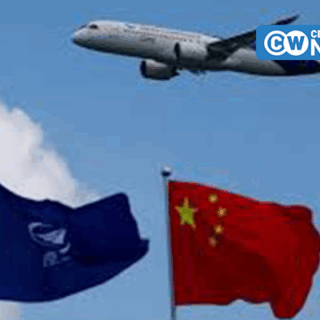In a move that has sent ripples through the geopolitical and aviation sectors, Vietnam’s low-cost carrier Vietjet has grounded and returned two Chinese-made COMAC C919 jets just six months after their introduction. This decision, coming on the heels of Chinese President Xi Jinping’s high-profile state visit to Hanoi in April 2025, is more than a commercial rebuke, it is a strategic signal of Vietnam’s growing disillusionment with China’s technological offerings and its broader geopolitical ambitions.
The C919, China’s flagship commercial aircraft developed by the state-owned Commercial Aircraft Corporation of China (COMAC), was touted as a symbol of the country’s industrial prowess and a challenge to the Airbus-Boeing duopoly. However, the aircraft’s performance in Vietnam has laid bare the limitations of China’s aviation technology. Despite no reported technical failures, the C919 was deemed economically inefficient by Vietjet, citing “poor fuel efficiency, high maintenance costs, and sluggish parts supply chains”.
The C919’s lack of international certification further restricts its global viability. Unlike Airbus and Boeing aircraft, which are certified by the FAA and EASA, COMAC’s jets remain largely confined to Chinese and a few friendly airspaces. This regulatory bottleneck, combined with outdated avionics and inefficient engines, underscores the technological gap between China’s aerospace ambitions and the reality of its capabilities.
Vietnam’s decision to terminate the wet lease agreement under which China provided not just the aircraft but also the crew, maintenance, and insurance was a diplomatic slap in the face. The lease was initially framed as a gesture of goodwill and deepening bilateral ties following Xi’s visit. Instead, the abrupt cancellation has exposed the fragility of China’s soft power in Southeast Asia.
What’s more telling is Vietnam’s pivot toward Western aerospace giants. Vietjet currently operates over 90 Airbus aircraft and has placed orders for 150 Boeing 737 Max jets. In June 2025, it inked another major deal with Airbus for up to 150 A320neo planes. This strategic alignment with Western manufacturers is not merely about performance it reflects a broader geopolitical recalibration.
Despite robust trade relations (bilateral trade between China and Vietnam surpassed $200 billion in 2024), Vietnam is increasingly wary of Beijing’s hegemonic ambitions. The South China Sea remains a persistent flashpoint. In September 2024, Chinese law enforcement vessels attacked Vietnamese fishermen near the Paracel Islands, injuring at least ten. Vietnam’s Ministry of Foreign Affairs condemned the act as a blatant violation of international law, while China dismissed the incident as enforcement against illegal fishing.
China’s expansive “nine-dash line” claim over nearly 80% of the South China Sea, has been widely rejected by international legal bodies. The 2016 ruling by the Permanent Court of Arbitration in The Hague invalidated China’s claims, citing violations of the United Nations Convention on the Law of the Sea (UNCLOS). Although Vietnam was not a direct party to the case, it has consistently supported the ruling and emphasized peaceful resolution through international law.
Meanwhile, China continues to militarize the region, constructing artificial islands and deploying military assets in disputed waters. These actions have not only escalated tensions with Vietnam but have also drawn the attention of global powers. In response, Vietnam has deepened defence ties with the United States, Japan, India, and Australia, and is actively modernizing its navy and air force.
The failure of the COMAC C919 in Vietnam is emblematic of a larger issue: China’s struggle to translate its economic might into technological credibility. The Chinese Communist Party (CCP) has long championed indigenous innovation as a pillar of national rejuvenation. Yet, in critical sectors like aerospace, its products remain technologically inferior and commercially uncompetitive.
Vietnam’s rejection of the C919 is not an isolated incident, it is a harbinger of a broader regional trend. Southeast Asian nations, while economically intertwined with China, are increasingly hedging their bets by aligning with Western powers for technology, defence, and infrastructure. This strategic diversification is a direct response to China’s coercive diplomacy and expansionist policies.
For Beijing, the implications are profound. The CCP’s attempt to use aviation diplomacy as a soft power tool has backfired. Instead of cementing influence, it has highlighted the limitations of China’s technological ecosystem and the growing resistance among its neighbours.
Vietnam’s decision to ground the C919 is more than a commercial calculation it is a geopolitical statement. It signals that even amid deep trade ties, sovereignty, security, and technological excellence remain non-negotiable. And in this calculus, China’s outdated aircraft and aggressive posturing are proving to be liabilities rather than assets.
Sources:
https://www.aeronewsjournal.com/2025/10/vietjet-ends-comac-c909-operations-in.html
https://www.lawfareblog.com/unclos-and-south-china-sea-dispute











